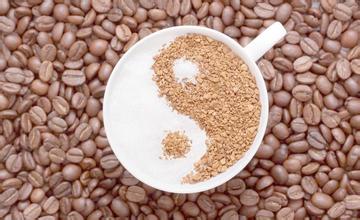What is the honey treatment of coffee beans? coffee beans are washed in the sun.
What is the honey treatment of coffee beans? coffee beans are washed in the sun.
Whether on a small coffee farm or a slightly larger coffee farm, all coffee in Indonesia is picked by hand. After picking, it is customary to soak in water to see the rough screening of ups and downs: the sunken coffee fruit is left behind, sundries floating on the water and green fruit are screened and then fermented. The fermentation in the water washing method is to soak the peeled pectin coffee beans in the fermentation tank to take advantage of the ability of bacteria to remove pectin. The process lasts about 24-48 hours, and the water quality in the soaking pool is about the same as the quality of the beans. Wet planing fermentation is slightly different. It takes only 12 hours, uses very little water, and is often carried out in smaller containers, such as plastic pots or even plastic bags. After this brief fermentation, most of the pectin adhered to the bean shell can be easily washed off, leaving a small amount of pectin left on the bean shell. This step is also done at the coffee farm level.
Brazilian coffee fields are endless and are mostly harvested mechanically in order to meet the economic benefits. When 75% of the coffee fruit in the coffee garden turns red, mechanical harvesting is started, followed by the same pre-washing operation, which is moved into the sink to remove floating beans, sift out the sunken beans, and then use a large pulp screening machine to dig out the pulp and remove the pods covered with pectin. The next stage is separate from the washing method: the sticky pods do not need to be moved into the tank to ferment, but to the outdoor bean drying farm. Because of the dry climate in Brazil, the sticky pectin on the pods will harden in about a day or so. Then use a large number of manpower to turn up and down, so that the pods dry evenly inside and outside, so as not to return to moisture and stink. For about two to three days, with the help of the natural forces of sunlight and dry climate, the pods can achieve a certain degree of dehydration. Then further dry with a dryer, the water content is reduced to 10.5%, and the pods are stored in a special container for about 10 days to further mature, in order to stabilize the quality, remove sheep skins (pods) before export, remove coffee beans, and pack them in stages.
Wet planing will also occur because the peel is removed in the production process, and the beans come into direct contact with the air, so defective beans such as mildew beans are much higher than water washing and sun drying.
This is the unique way of handling Sumatran Mantenin flavor.
In addition, the peel and pulp that have been removed can also be fermented into fertilizer. If such ecological fertilizer is used in the plantation, it can be added when applying for an organic coffee plantation.
Coffee from gayo in northern Sumatra, toba in central Sumatra and SP bolon in central Sumatra has its own characteristics. For the editor, I personally like the beans in the gayo producing area best.

Important Notice :
前街咖啡 FrontStreet Coffee has moved to new addredd:
FrontStreet Coffee Address: 315,Donghua East Road,GuangZhou
Tel:020 38364473
- Prev

Introduction to the differences and characteristics of deep roasting and shallow baking of coffee beans
The difference and characteristics of deep roasting and light roasting of coffee beans introduce the origin of Ethiopian century-old coffee TOMOCA mocha beans: Ethiopia Ethiopia cooked beans, harar-long bean roasted very authentic, full-bodied and irritating. Coffee roasting is very interesting, easy to learn but not easy to go deep into. It is a field that is easy to learn but difficult to master. Humans have thousands of things about wine and tea.
- Next

The method of making Pacamara Coffee beans
The method of making Pacamara Coffee beans Guatemala launched Pacamara Coffee and Nicaragua launched Malakaz Coffee. The hybrid of Malakaz coffee Marago Rippi and Kaduai belongs to the large variety of No. 19 sieve and has a low yield. Therefore, crossing with Kaduai, a dwarf variety with high yield, a variety with mild floral flavor and sour taste was finally bred, and there were
Related
- Guji coffee producing area of Guji, Ethiopia: Humbela, Shakiso, Wulaga
- What is the most expensive variety of Qiloso in BOP multi-variety group?
- How to store the coffee beans bought home?
- Why are Yemeni coffee beans so rare now?
- Ethiopian Sidamo all Red Fruit Sun Sun Santa Vini Coffee beans
- SOE is mostly sour? What does it mean? Is it a single bean? what's the difference between it and Italian blending?
- Is Italian coffee beans suitable for making hand-brewed coffee?
- How to choose coffee beans when making cold coffee? What kind of coffee beans are suitable for making cold coffee?
- Just entered the pit to make coffee, what kind of coffee beans should be chosen?
- Can only Japan buy real Blue Mountain Coffee? What are authentic Jamaican Blue Mountain coffee beans?

